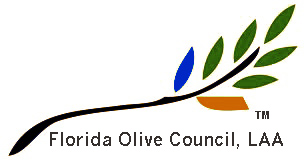The Importance of Irrigating Olives
Overview
The olive (Olea europaea) is the oldest known cultivated crop. Early olives were desert trees thought to originate in. There are many myths about olives. One of the classic bits of misinformation is the olive tree will grow anywhere and needs little or no water. Without pondering all the possible meanings of this statement, international experience suggests if you want to develop an economically viable olive oil plantation you should irrigate your trees. It is also abundantly clear the investment you make in your olive grove irrigation system is probably the most important decision you will make. The reason is the irrigation system is not a “necessary evil” but rather an essential management tool you need to properly produce consistent quantity and quality of oil.
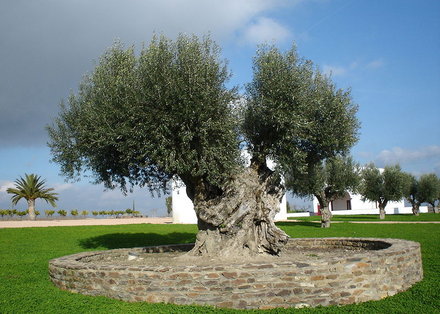
1000 year old olive tree
A review of international research reveals a wealth of information. Samish and Spigel (1961) found oil yield increased as a result of irrigation – averaging 30% above that of non irrigated fruit. Tombesi et al. (1996) found irrigated trees bear more fruit per tree and produce more oil per hectare than non-irrigated trees. Lavee and Wodner (1991) found there was a definite relationship between irrigation and oil accumulation in olives. They also found irrigation could be used to minimize environmental factors affecting oil production and well managed irrigation systems could bring fruit uniformly to maximum oil content and hence provide an economical harvest time.
It is generally accepted that an irrigation system in the correct climatic zone can effectively be used to control bloom, fruit set and reduce the effect of alternate bearing on oil yield. It can be seen from examining documented trials that irrigation has a significant impact on the successful establishment and management of an olive grove.
The olive is an alternate bearing tree, which means that one year it has a heavy crop and in the alternate year it bears a lighter crop. Alternate bearing occurs because a heavy crop in one year suppresses shoot growth and exhausts food reserves for the alternate year. Since olives bloom on the previous year’s new growth, flowering and fruit set are reduced in the following year (Sibbett 1994). It has been shown that irrigation applications during the year can overcome the effects of alternate bearing. Irrigation applied early in the growing season enhances shoot growth, which in turn increases the number of fruits in the subsequent season (Samish and Spiegel 1961).
The oil percentage at corresponding stages of maturity remained the same and therefore the total oil yield was increased because of the greater number of fruits. Research by Tombesi et al. (1996) found the number of fruits per tree is determined in spring and early summer. It is in this period that irrigation is essential if a high number of fruits with high oil yield is to be achieved in the subsequent season. Early irrigation is advantageous in overcoming the effects of alternate bearing but has little influence on the current season’s fruit.
Late irrigation (after the spring flush) can be used to manage the current season’s crop by increasing the fruit size and the flesh stone ratio whilst delaying maturation (Samish and Spiegel 1961). The amount of irrigation required is a function of the environmental and soil factors that are peculiar to individual sites. A summary of the importance of irrigation at various times in the season could be stated as follows: Early irrigation encourages shoot growth, which increases the number of fruits in the second season. Irrigation during the season influences fruit size and the stone flesh ratio.
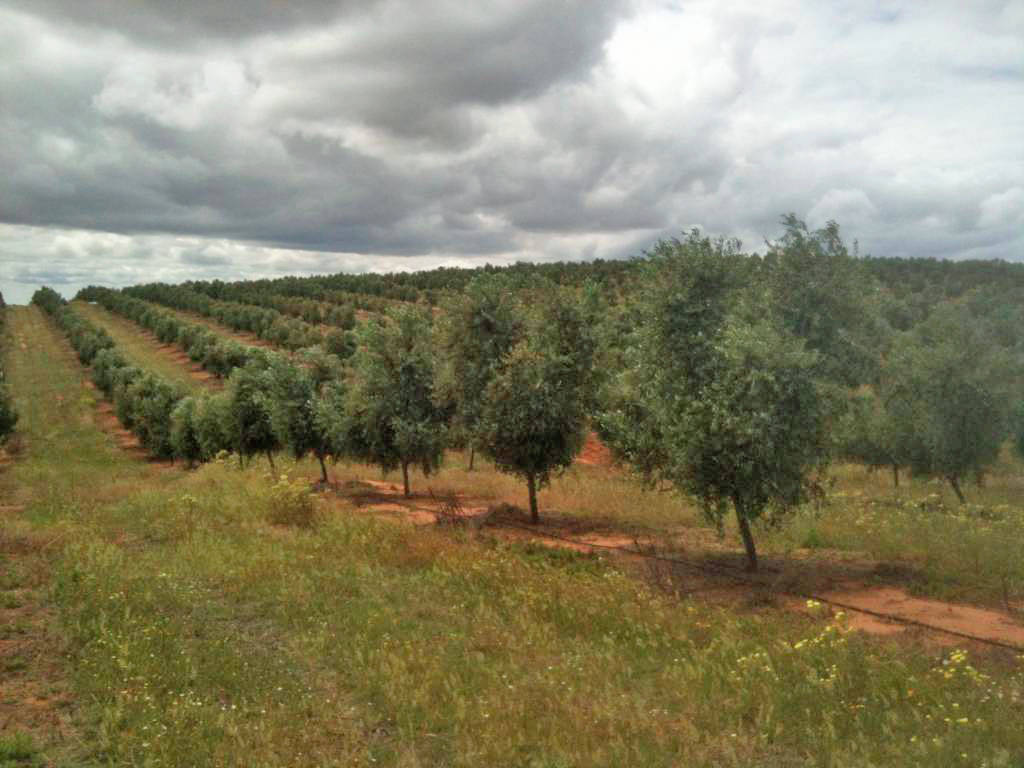
Irrigated olive grove outside of Sevilla, Spain
After reviewing only a small amount of international research it would appear the need to properly plan and implement irrigation for olive production is quite clear. The quality and performance of the irrigation system will be a major asset in crop management and economically viable production particularly in areas of low to medium summer rainfall. Now that the need for good irrigation practices has been established it is important to review the options for irrigation systems and the individual components making a system functional.
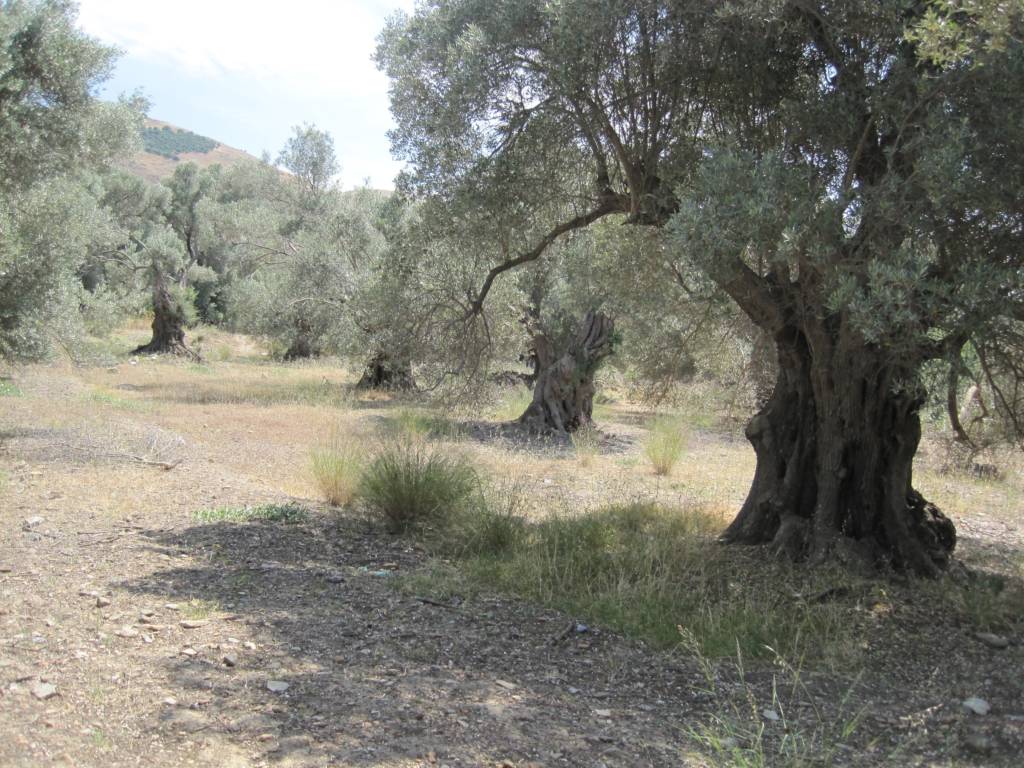
Old olive grove Knossos, Crete
Since the physical layout of your grove will drive irrigation system design, it is important to carefully document tree and row spacing, specific placements of various cultivars (for pollination), distances from well-head or other water source to the grove, use of plastic weed block and other components. Many groves are designed in blocks, or specific sub-divisions of the overall grove. Each block will have a dedicated irrigation connection for best management of water resources. After the grove layout is completed, the irrigation engineer will be able to design a system to most efficiently provide water and other water-borne resources (fertilizer, pest control, minor elements, etc.) to the olive trees.
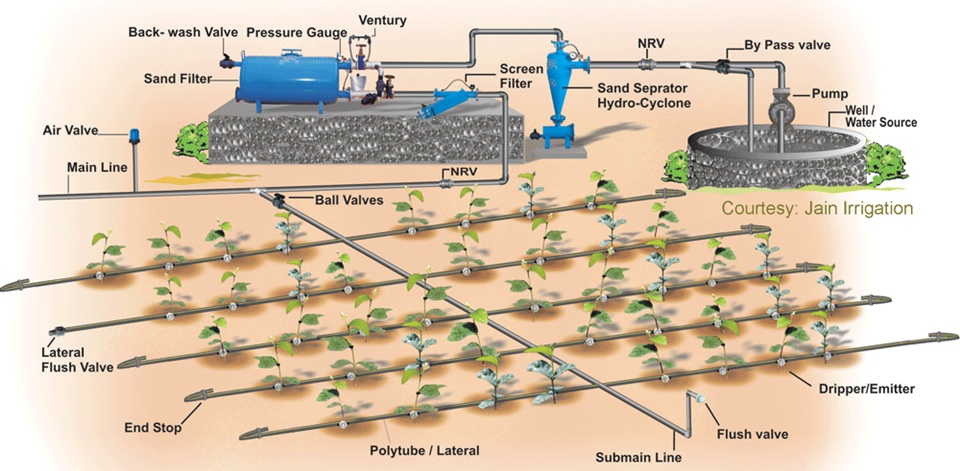
Components of an Irrigation System
When discussing irrigation in this context we will confine the discussion to the area of micro irrigation or irrigation using micro sprinklers and drip emitters. The use of flood irrigation, traveling irrigators and the like are not considered to be viable irrigation techniques. The main reason for limiting the discussion to micro irrigation is the water resources in many areas are extremely limited and it is widely accepted that water availability will continue to decrease, and the cost of the water will continue to increase.
Micro irrigation is the most efficient and agronomically advantageous to the olive grower, hence the focus of this paper. The following is a brief description and comment about the most common major components that are found in an irrigation system. The list is not exhaustive and there may be some other items that may specifically suit a particular site and application.
Pumps
Several types of pumps may be used in an irrigation system. Main factors influencing the type of pump used is the water source, the static elevation from the water source to the olive trees, the type of power available and the size and nature of the planting. The main issue concerning pump stations is they should have sufficient flexibility to cater to the infrastructure (piping, distance, capacity, etc.) necessary to correctly manage the flow of water to the field. There are many options concerning electronic controls of pumps and it is important to select pump controls that can be serviced by local irrigation dealers and or the manufacturers of the equipment.
Filtration
Filtration is essential when using micro irrigation. The type, size and cost of the filtration system will be determined by the following factors:
-
Water source
-
Water quality
-
Flow rate required
-
Type of “emitter” selected
-
Availability of power
-
Preferred maintenance practices on site
There are three categories or types of filtration systems available
-
Gravel filtration
-
Disc filtration
-
Screen filtration
Gravel and disc filtration is primarily used for surface water or water from dams and rivers. The reasons for choosing gravel or disk will be determined by water quality. It is generally accepted that gravel filtration provides the the highest degree of filtration. This is due to the effectiveness of the crushed basalt filtration media. The basalt is highly angular and provides the best environment for “trapping” debris and cleaning the water supply.
Disc filtration is three dimensional, consisting of a cylinder of compressed discs containing grooves. The grooves form passages of varying dimensions through which the water passes. Debris is caught between the discs and the resultant clean water continues into the system. The disc filter is more economical to install than gravel as it takes up much less room physically. Unlike gravel, the disc filter has the advantage of mechanical self-cleaning. Disc filtration provides the best long term automatic filtration option for surface and well water that is free from large populations of algae.
Screen filters consist of a fine stainless steel mesh or screen that is formed into a cylindrical cartridge. Water passes through the cartridge and then into the system. The debris is caught on the surface of the screen. The screen filter is only two dimensional and is generally not suitable for cleaning of surface waters. The main application of the screen filter is in “back up” mode after another type of filtration or as a main filter on a well water system where there is very little possibility of heavy debris loading after the well is drilled.
Pressure Relief Valve
For medium to large irrigation systems (flows above 10 liters per second and pressures of 500 kPa) it is essential to consider the installation of pressure relief valves for the protection of the irrigation system. In the competitive world of irrigation contracting one of the first things to be omitted from the tender is the relief valve. This is a valve that will sense a high pressure condition in the system and open itself to vent the high pressure to atmosphere thereby protecting the system from bursting. These valves are relatively inexpensive and are invaluable when it comes to system protection. Consider installing one!
Pressure Reducing/Sustaining Valves
Other valve configurations may be necessary because of the configuration of the filtration system or some other consideration. Ensure that you get reliable advice concerning the correct valves for the installation.
Water Meter
A water meter is the most valuable tool in any irrigation system. It is the only way of accurately determining flows in the system and checking for system performance. A good irrigation system designer will be able to tell you within 1%-2% what the exact flow in the system should be under various conditions. The only way to check flow after installation is to use a water meter. The meters may have electronic outputs for connection to a digital irrigation controller. Some systems might use an older analog device.
An important use of the water meter is trouble shooting. High flows could indicate a leak or incorrect pressure setting in a system; low flows could indicate a blockage or a broken valve. Another important reason for installing a water meter is the ability to measure the volume of water being delivered to your olive grove. The best way to ensure accurate water application is to use electronic meter output to a controller.
Isolation Valves
All systems should have isolation valves installed so the various parts of the system can be isolated for maintenance and other purposes.
Mainline
This is the pipeline (usually PVC or Poly) which carries water to the subsections of the olive grove. The design of the mainline is critical, as it must transport all required water around the property so as to replenish the water used by plants in a given period of time. The mainline design is affected by “worst case” summer environmental trends, soil type, olive varieties planted and preferred management techniques.
Block Valves
This is the control valve which is used to turn water on and off in a block of olives. The valve is usually equipped with some sort of pressure regulating device and often has a back up filter installed in larger systems. The valve can be controlled electrically, hydraulically and in some cases pneumatically.
Sub-Main
This is the term given to the pipe (usually PVC or Poly) which carries the water from the valve to the laterals in the block.
Laterals
This is the term given to the pipe (almost always Poly) that carries the water to the emitters in the system.
Emitters
This is the term given to the device that sprays or places the water on the ground so that it can infiltrate into the soil and thereby be accessed by the olive tree. The emitters are usually micro sprinklers or drippers (emitters).
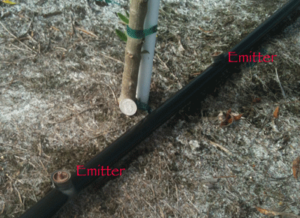
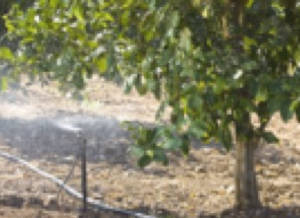
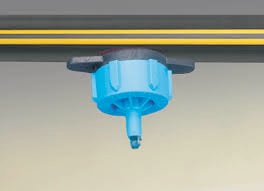
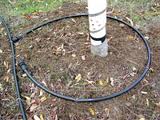
Ancillary Items
There are several ancillary items used in irrigation systems.
The following are just a few of the more important ones:
Flushing valves
Flushing valves are simply a ball or gate valve that are installed in the system at strategic locations to aid in the process of cleaning or flushing debris that may find its way into the system as a result of installation techniques, pipe breakage or filtration failure. The most important location for flush valves are as follows:
-
End of mainlines
-
At field valves
-
End of sub-mains
-
End of laterals
-
Low points in the mainline
Air release/vacuum valves
One of the major causes of pipeline failure in irrigation systems is air. When air can not escape from an irrigation system it is compressed by the water in the pipes and then expands rapidly, often with devastating results. A similar situation occurs when the water in a mainline network drains out and air can not enter the system to replace it, a vacuum is created and pipes collapse. The most important location of air valves is as follows:
-
High points in the mainline
-
Intersections of the mainline
-
End points of the mainline
-
Every 500 m on long mainlines
-
On filtration systems
Control system
A reliable control system is an important component of an irrigation system that contains valves for controlling water application to different varieties and soil variations. The only way to accurately control water application and manage labour resources effectively is with an irrigation controller. There are literally 100’s of irrigation controllers available on the market today. The main features of an irrigation controller that you consider for an agricultural application are as follows:
-
Ease of use
-
Local back up and service for the unit
-
Irrigation by volume or time
-
Ability to control fertigation systems
-
Reflect the size and nature of your investment
-
Easily expandable
-
Have reasonable lightning protection or be fitted with after-market protection.
Fertigation
Fertigation is the application of soluble fertilizer through the irrigation system in a controlled and efficient manner. The best way to maximize the performance of the olive tree with your micro irrigation system is to install a fertigation unit that will accurately inject fertilizers into the water supply for uptake by the trees. A fertigation system consists of a tank, an agitation system, some form of injection pump, fertilizer meter and automatic valves for system start up. The fertigation system cost is insignificant when its potential returns are evaluated. Correctly designed, installed and operated the fertigation system could be the difference between success and failure in oil production.
Soil moisture monitoring
Soil moisture monitoring obviously refers to the measurement of how wet or dry the soil is and thereby determining the need to start or stop the irrigation system. There are many ways of detecting soil moisture and the costs of doing it range from as little as a $100.00 to several thousand dollars. The main factors governing the decision to buy soil moisture monitoring equipment are:
-
Proven reliability
-
Ease of use
-
Ease of interpretation of readings
-
Back up and service availability
-
Ease of installation
-
Ease of calibration to your soil types
The Importance of Choosing the Correct Emitter
There has been little attention given to the type of emitter that best suits the production of olive oil. From an international perspective drip irrigation is the most common form of irrigation in most commercial olive groves. Sprinklers have been more popular in Australia. Below we will review that advantages and disadvantages of each type of emitter.
Sprinklers
One of the more reliable sprinklers in the olive industry today is the Netafim Supernet™ two-stage swivel with 20 l/hr up to 90 l/hr nozzles. This sprinkler has been tried and tested by olive growers over the last few years around the world. Recently there have been a few imitations released on the market. The Netafim Supernet™ was the first with the two stage swivel, the blue stake and the two stage installation technique that gives flushing a high priority during commissioning.
The advantages and disadvantages of sprinklers generally are as follows:
Advantages:
- Operation is easily seen
- Two stage swivel suits developing tree
- Blue stake is highly visible
Disadvantages:
- Promotes weed growth
Other Considerations:
-
Spray is subject to wind drift
-
Hinders mechanical harvesting
-
Hinders maintenance of inter row cover crop
-
Subject to insect attack
-
Lateral line can move and pull over sprinkler
-
If emitter blocks tree doesn’t get watered
-
Can’t fertigate if wind is blowing
-
Only 70 – 80 % efficient in water use
-
Installation is labour intensive
-
Must punch hole in lateral accurately
-
Lateral can be crushed by roots if buried in first year
Drippers
Inline drip irrigation is by far the most popular form of irrigation in olive groves around the world. With the modern technology available today drip irrigation offers efficient trouble free irrigation. The olive industry has seen the development of several innovative ideas that specifically answer some of the needs of growers.
The introduction of “PC skip drip” and the “Oliveline Plugs” provides efficient water use and practical system development which suits the establishment of the olive tree. “PC skip drip” is an integral drip line product from Netafim that contains factory extruded poly pipe with drippers inserted at set intervals around the tree and then a blank in the area between trees where water is not required.
The “Oliveline Plugs” are used to block drippers in factory extruded drip lines which contain regularly spaced drippers so that water is not wasted between the trees when they are young. The factory extruded drip lines are available in various spacings and flow-rates to suit the requirements of individual plantings.
Advantages
-
Ease of installation.
-
Excellent water efficiency (85 – 95 %)
-
Great for establishment
-
Minimize weed development
-
Can fertigate at any time
-
Can move the drip line as the tree develops
-
Can remove “Oliveline plugs’ as the tree develops
-
Can inject the drip line subsurface
-
No damage to system during harvesting
-
Can slash the inter row cover crop when subsurface
-
Maximum water control
-
Maximum root development possible
Disadvantages
-
May be challenging for some first time growers
-
Water not easily seen when system is subsurface
Irrigation System Design Considerations
Soil survey
Know and understand the type and variation of soil on your property so that correct irrigation can be designed and varietal allocation can be made. In Florida, your county agricultural agent can help you locate inexpensive or free soil and water analysis resources.
Water analysis
Take a water sample in a clean plastic 1 liter bottle, fill the bottle to the top, screw the lid on tightly, place the bottle in an environmentally controlled container (styrofoam cooler) and take it to a laboratory for analysis as soon as possible. Ask the lab to test the pH, and the major ions such as calcium, sodium, chlorine, and also the presence of iron (Fe), etc. Iron can be a major problem contributing to blockages, and needs special attention.
Historic climatic data
If you are in an area where there is little or no intensive horticultural activity contact the bureau of meteorology and try to obtain a detailed print out of the historical weather data in the area. Information should include rainfall, temperature, humidity, day length, wind speed and light intensity. The Florida Automated Weather Network (FAWN) provides detailed information about historic and current Florida weather.
Plan of property
Obtain a survey of your property with contours at 1.0 meter intervals at a known scale. This will give you an idea of the drainage characteristics of your land. With this information you can avoid planting olive trees in low-lying areas.
Block layout
Draw onto the property plan a scaled outline of the block boundaries that define soil areas and varietal allocation to blocks. Note that longer run lengths are better than short ones.
Power availability
Note the maximum power availability on your property, whether it is 3 phase or single phase (sometimes known as “Dual voltage” or 480 volts) and what is the distance to pump locations from the nearest power.
Contact Professionals
Contact professional organizations/individuals or your nearest dealer for further information. Ask the people concerned to show a portfolio of successful projects to date, and a proven track record of their performance. Dr. Michael Dukes of the University of Florida’s Institute of Food and Agricultural Sciences is a recognized expert on irrigation. His publications are available here.
References
Beede, R.H., and Goldhamer, D.A, (1994). Olive Irrigation Management. In ‘Olive Production Manual’ (Eds. Ferguson, L., Sibbett, G.S., and Martin, G.C) University of California, Division of Agriculture and Natural Resources, Oakland, CA. Publications 3353.
Lavee, S., and Wodner, M. (1991). Factors affecting the nature of oil accumulation in fruit of olive (Olea Europea L.) cultivars. Journal of Horticultural Science (1991) 66(5): 583-591.
Samish, R.M. and Spiegel, P (1961). The use of irrigation in growing olives for oil production. Israel Journal of Agric, Research. 11:87-95.
Spiegel, P. (1955). The water requirements of the olive tree, critical periods of moisture stress and the effect of irrigation upon the oil content of the fruit. 14th International Horticultural Congress, Netherlands, 2, 1363-72.
Tombesi, A., Michelakis, N., and Pastor, M. (1996). Recommendations of the working group on olive farming production techniques and productivity. Olivae 61: 38-51.
We need your help.
The Florida Olive Council is a non-profit organization certified under Federal tax code 501(c)(3) and Florida statutes Chapter 617. We are supported by your contributions. Ninety-five (95%) of your donation goes directly to supporting olive research. Our directors and officers receive no salary or other compensation. Donate
